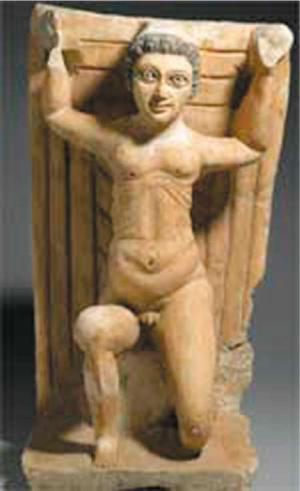This is an archive of the ArtCat Zine, 2007-2009. Please visit our new project, IDIOM.
Beware Fake Coptic Art
So you might have heard that The Art Newspaper reported this week that one third of the Brooklyn Museum's collection of Coptic art is fake. Coptic art dates from the early Christian era in Egypt, and I hope I am not indicting myself too much to say its the first I have heard of it. It gets interesting. The Art 'paper writes: "The unmasking of the forgeries will be revealed in an exhibition on 'Coptic Sculpture in the Brooklyn Museum,' opening [early next year.] The Art Newspaper can reveal that ten of Brooklyn’s 30 sculptures are now deemed to be complete fakes, with over half the remainder having been recarved and repainted in modern times." The 'can' here is indicative. One wonders, if said fakes were not part of an upcoming exhibition, would the paper have been able to reveal it? Did it have the story and was waiting for permission? The Independent notes "The publicity surrounding the exposure of the fakes should help promote the February exhibition, Dr [Edna] Russmann [a Brooklyn Museum Curator] said, and help offset any embarrassment stirred by the revelation... 'I don't see any tragic faces here this morning,' she noted." But wait! It gets better, back to TAN: "Although Brooklyn’s conservators have made a preliminary examination of their Coptic sculptures, decisions on authenticity have been made primarily on connoisseurship, relying on style and iconography." Well thank goodness for the experts rushing to inform a Coptic-mad public about these nefarious forgeries! Oh wait, "Russmann... said she began to have suspicions ... about four years ago. She said she has no qualms about going public with her findings now. 'It's about time,'" Indeed, the exhibition, the purpose of which "will be to alert other US institutions to the possibility that they too have fake pieces in their collections," opens in February.
ZINE
HOME
TIPS / COMMENTS
CATEGORIES
CONTRIBUTORS
- Greg Afinogenov
- B. Blagojevic
- Adda Birnir
- Susannah Edelbaum
- Julie Fishkin
- Paddy Johnson
- Jessica Loudis
- Christopher Reiger
- Andrew Robinson
- Peter J. Russo
- Blythe Sheldon
- S.C.Squibb
- Hrag Vartanian

